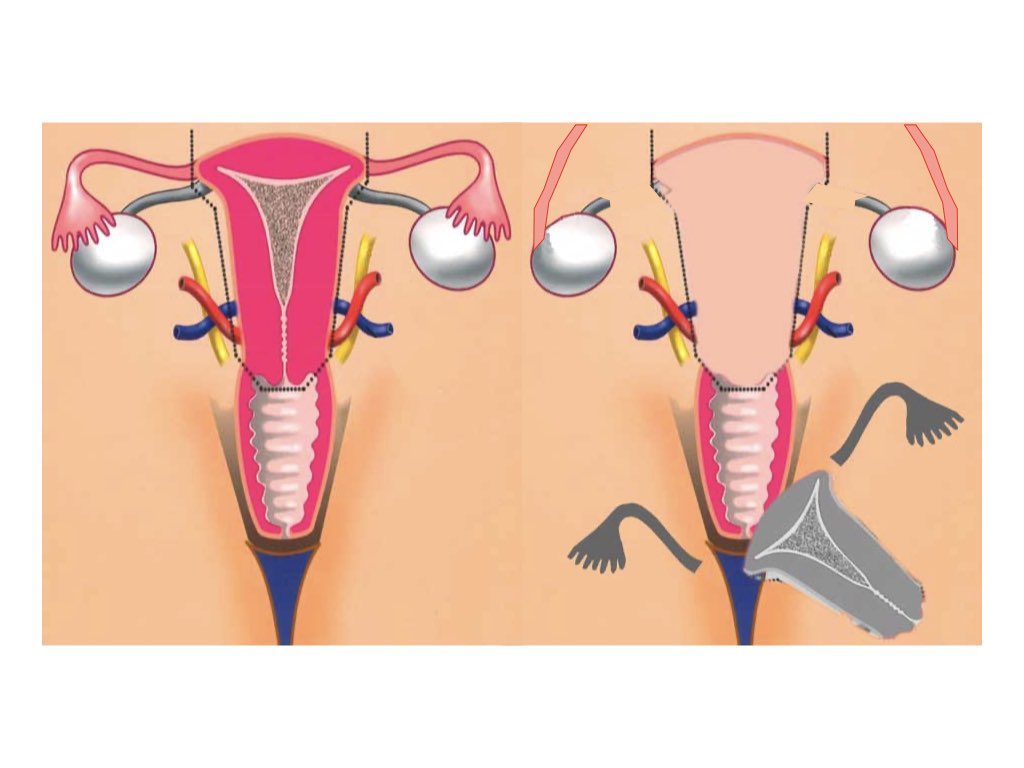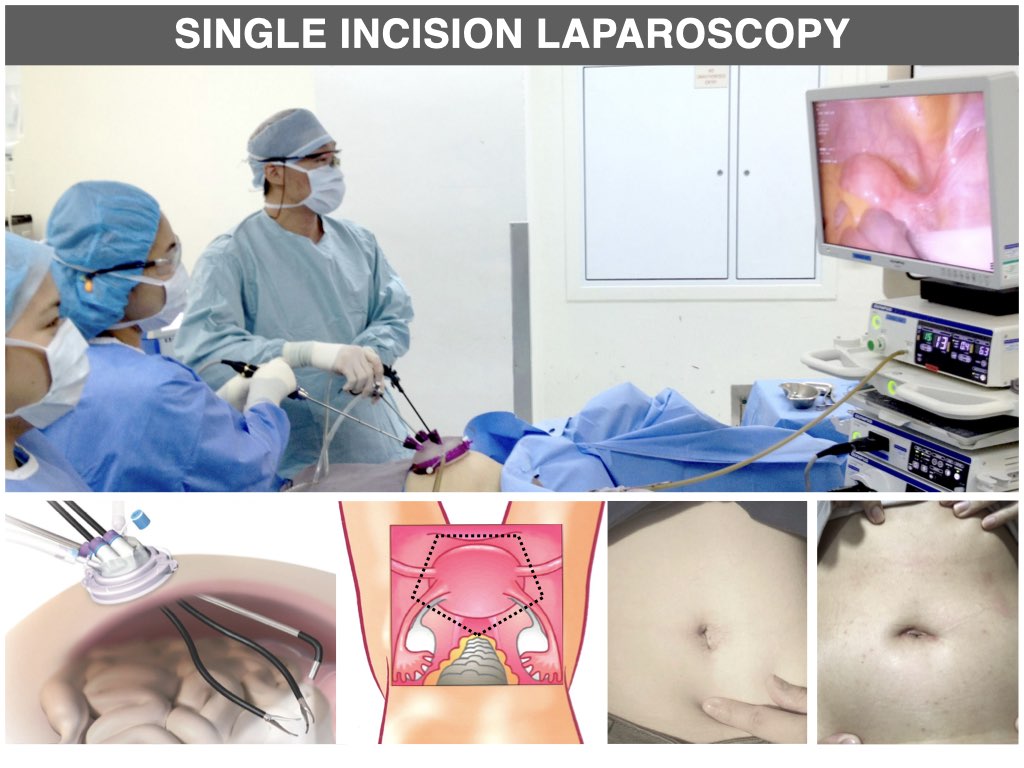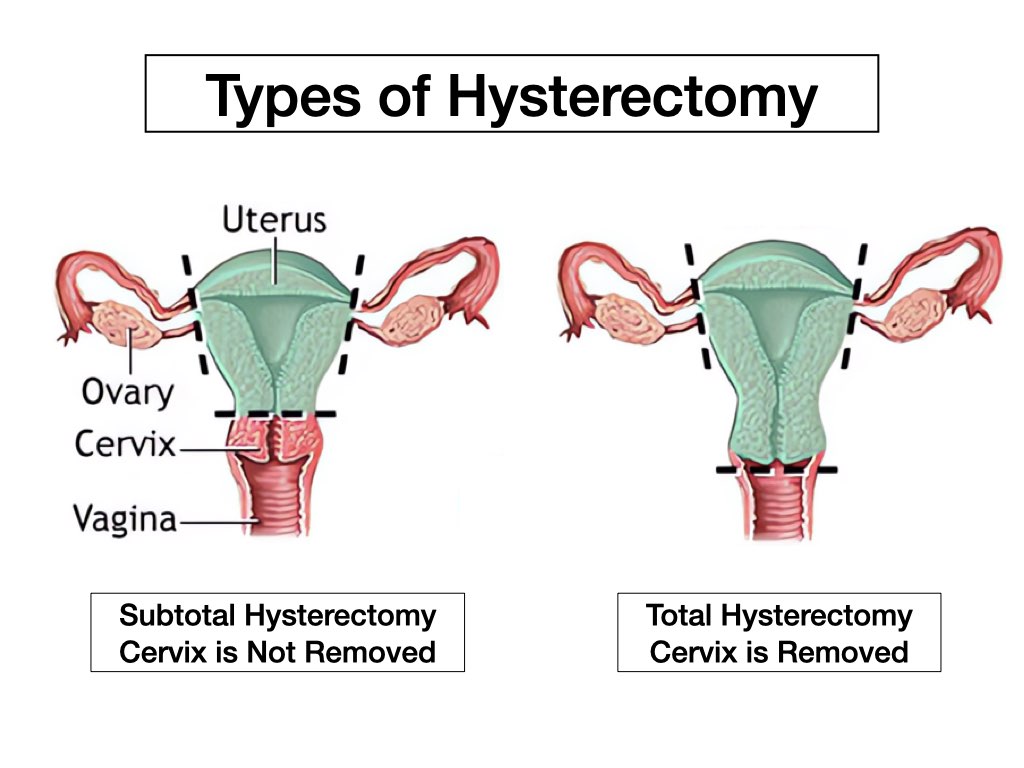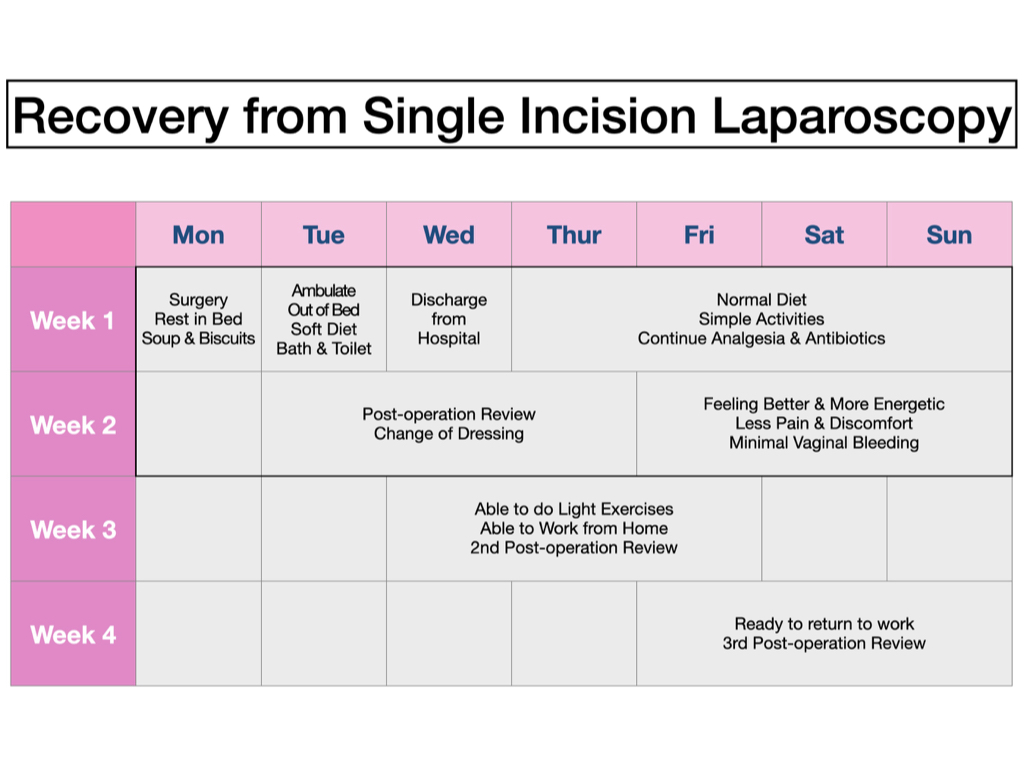Hysterectomy
Hysterectomy is the removal of the Uterus
Removal of the Uterus does not cause menopause when the Ovaries are not removed.
Removal of the Uterus only stops menstruation and pregnancy.
If the Ovaries are not removed, the ovaries will continue to function to prevent menopause

The reasons for Hysterectomy are:-
- Pre-cancer or Early Cancer of the Cervix - CIN3 or Cervix Cancer 1A
- Pre-cancer or Early Cancer of the Endometrium - Atypical Endometrial Hyperplasia or Early Grade 1-2 Endometrial Cancer
- Severe heavy menstruation causing anemia, that cannot be optimally treated by medication
- Severe menstrual pain from Endometriosis of the Uterus (Adenomyosis)
- Multiple large and recurrent Fibroids distorting the uterus
Dr Anthony Siow routinely aims for Single Incision Laparoscopic Hysterectomy.
Single Incision Laparoscopy is less painful, carries a lower risk of infection, and leads to a faster recovery with hardly any visible scarring.






The bladder and ureter are close to the cervix.
To protect the bladder and ureter at hysterectomy, a blue cup is placed at the cervix inside the vagian to push the cervix upwards.
As the cervix is pushed upwards, it creates a safety margin for Total Hysterectomy when the cervix is removed.
In a Subtotal Hysterectomy, where surgery is done above the cervix, the risk to the bladder and ureter will be reduced.

The supporting ligaments of the pelvis are attached to the cervix.
In Total Hysterectomy where the cervix is removed, the supporting ligaments need to be stitched back to the vaginal to prevent pelvic hernia.
In Subtotal Hysterectomy where the cervix is not removed, the supporting ligaments of the pelvis that are still attached to the cervix are left untouched.
